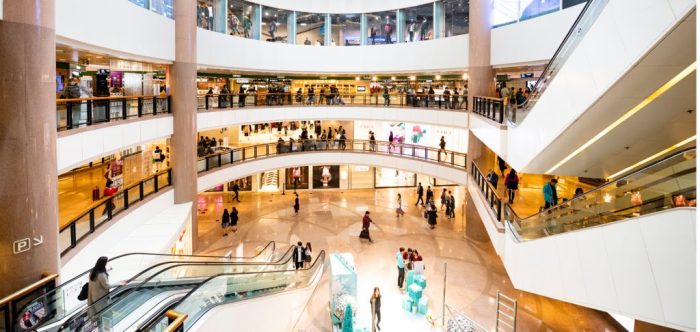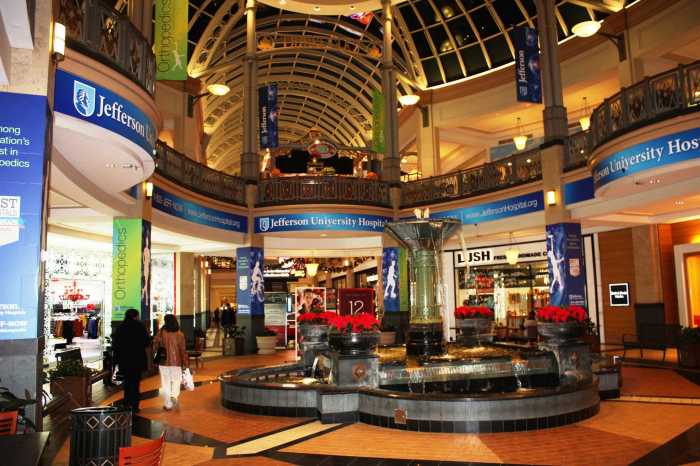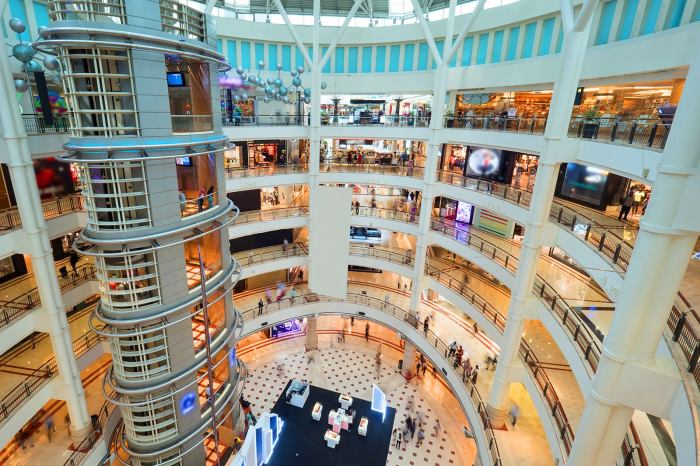Mall near me – Welcome to the world of malls near you! In this comprehensive guide, we embark on a journey to uncover the diverse types of malls, their enticing amenities, and the strategic factors that shape their success. Whether you’re a seasoned shopper or a curious explorer, this narrative promises to provide an engaging and informative experience.
From the bustling corridors of colossal shopping centers to the intimate ambiance of neighborhood malls, our exploration delves into the unique characteristics of each type. We’ll uncover the importance of mall amenities, ranging from delectable food courts to state-of-the-art entertainment options, and their role in enhancing your shopping experience.
Mall Types

Malls are classified into various types based on their size, location, and target audience. Each type offers unique characteristics and caters to specific shopping needs and preferences.
Malls can be categorized as follows:
Size, Mall near me
- Regional Malls:The largest malls, typically spanning over 800,000 square feet. They offer a wide range of stores, including anchor tenants, department stores, and specialty shops. Examples include the Mall of America in Minnesota and the King of Prussia Mall in Pennsylvania.
- Super-Regional Malls:Even larger than regional malls, exceeding 1 million square feet. They feature a vast selection of stores, entertainment options, and dining choices. Examples include the South Coast Plaza in California and the Woodfield Mall in Illinois.
- Community Malls:Smaller than regional malls, ranging from 200,000 to 600,000 square feet. They primarily serve local communities and offer a mix of stores, including grocery stores, drugstores, and restaurants. Examples include the Westgate Mall in Maryland and the Tyson’s Corner Center in Virginia.
- Neighborhood Malls:The smallest type of mall, typically below 200,000 square feet. They are located in residential areas and offer convenience shopping for everyday needs. Examples include the strip malls and shopping centers found in many towns and cities.
Location
- Downtown Malls:Located in the central business districts of cities. They offer a combination of retail, office, and residential spaces. Examples include the Eaton Centre in Toronto and the City Creek Center in Salt Lake City.
- Suburban Malls:Situated in the outskirts of cities, these malls cater to suburban residents. They typically offer a mix of retail, entertainment, and dining options. Examples include the Galleria in Houston and the Scottsdale Fashion Square in Arizona.
- Power Centers:Located in high-traffic areas, power centers are anchored by big-box stores and offer a limited selection of smaller shops. Examples include the Power Plant in Anaheim, California and the Bridgeport Marketplace in Oregon.
- Outlet Malls:Located in remote areas or near tourist destinations, outlet malls offer discounted merchandise from brand-name stores. Examples include the Tanger Outlets in South Carolina and the Woodbury Common Premium Outlets in New York.
Target Audience
- Luxury Malls:Cater to high-end shoppers and offer a curated selection of luxury brands. Examples include the Bal Harbour Shops in Florida and the Rodeo Drive in Beverly Hills.
- Value Malls:Focus on providing affordable shopping options for budget-conscious consumers. Examples include the Five Below in Pennsylvania and the Dollar Tree in California.
- Specialty Malls:Target specific niche markets, such as antiques, electronics, or home décor. Examples include the Antique Row in Chicago and the Akihabara Electric Town in Tokyo.
- Themed Malls:Offer a unique shopping experience based on a specific theme, such as entertainment, sports, or travel. Examples include the American Dream in New Jersey and the Mall of Asia in the Philippines.
Mall Amenities

Malls are not just about shopping anymore. They have evolved into destinations that offer a wide range of amenities to enhance the shopping experience and cater to the needs of visitors. These amenities include food courts, retail stores, entertainment options, and services.
Food courts are a staple of any mall. They provide a convenient and affordable way for shoppers to grab a bite to eat without having to leave the mall. Food courts typically offer a variety of cuisines, from fast food to sit-down restaurants.
Retail stores are the bread and butter of malls. They offer a wide range of products, from clothing and accessories to electronics and home goods. Malls typically have a mix of national chains and local boutiques, so shoppers can find everything they need under one roof.
Entertainment options are another important amenity in malls. They help to keep shoppers entertained and engaged, and they can also generate additional revenue for the mall. Entertainment options can include movie theaters, arcades, and bowling alleys.
Services are another important amenity in malls. They help to make the shopping experience more convenient and enjoyable for shoppers. Services can include ATMs, currency exchange, and valet parking.
Importance of Mall Amenities
Mall amenities play an important role in enhancing the shopping experience. They provide a convenient and affordable way for shoppers to grab a bite to eat, find the products they need, and stay entertained. Amenities can also help to generate additional revenue for the mall and make it a more attractive destination for shoppers.
Mall Location and Accessibility: Mall Near Me
The success of a mall depends not only on its offerings but also on its strategic location and accessibility. When choosing a mall location, several factors must be considered to ensure maximum foot traffic and convenience for customers.
Proximity to residential areas is crucial as it determines the catchment area of the mall. Malls located near densely populated areas have a larger potential customer base. Transportation options are equally important, with malls easily accessible by public transportation, such as buses, trains, or subways, attracting more customers.
Visibility plays a vital role in attracting customers, so malls situated on major roads or in high-traffic areas are more likely to be noticed and visited.
After an invigorating day exploring the pristine shores of canggu beach , you might find yourself craving some retail therapy. Fortunately, there are several malls nearby that cater to your shopping needs. Whether you’re looking for souvenirs, local handicrafts, or designer brands, you’re sure to find something to suit your fancy.
Accessibility for Customers
Accessibility is paramount for the success of a mall. Customers should be able to easily navigate the mall, find parking, and access amenities without any hassle. Malls with well-designed layouts, clear signage, and ample parking spaces enhance the shopping experience and encourage customers to return.
Mall Marketing and Promotions

Malls employ various marketing and promotional strategies to attract customers and boost revenue. These strategies encompass a range of channels, including traditional advertising, digital marketing, loyalty programs, and experiential events.
The effectiveness of different marketing channels varies depending on factors such as the target audience, the mall’s location, and the type of products and services offered. However, some common channels that have proven effective include:
Online Marketing
- Social Media Marketing:Malls leverage social media platforms like Facebook, Instagram, and Twitter to engage with customers, promote events, and showcase new products.
- Email Marketing:Malls send out newsletters and promotional emails to subscribers, providing information about upcoming sales, exclusive offers, and mall events.
- Search Engine Optimization ():Malls optimize their websites to improve their visibility in search engine results, making it easier for customers to find information about the mall and its offerings.
Traditional Marketing
- Print Advertising:Malls place advertisements in local newspapers, magazines, and flyers to reach a wider audience.
- Billboards and Signage:Malls use billboards and signage in high-traffic areas to promote the mall and its tenants.
- Radio and Television Advertising:Malls purchase advertising slots on local radio and television stations to reach a mass audience.
Experiential Marketing
- Events and Promotions:Malls host special events, promotions, and contests to create a memorable and engaging experience for customers.
- Pop-Up Shops:Malls lease temporary spaces to emerging brands and small businesses, providing customers with unique and exclusive shopping opportunities.
- Community Partnerships:Malls partner with local organizations and charities to support community events and initiatives, fostering a positive relationship with the surrounding area.
Loyalty Programs
- Membership Programs:Malls offer membership programs that provide exclusive benefits and rewards to loyal customers, such as discounts, early access to sales, and special events.
- Gift Cards:Malls sell gift cards that can be used at any store or restaurant in the mall, encouraging customers to make repeat purchases.
By effectively implementing a combination of these marketing and promotional strategies, malls can attract customers, increase brand awareness, and drive revenue.
Mall Management and Operations

Mall management plays a crucial role in ensuring the smooth operation and success of a shopping mall. They are responsible for maintaining a positive and safe environment for both tenants and customers.
Mall management’s responsibilities include:
Tenant Relations
- Leasing and managing tenant spaces
- Enforcing lease agreements
- Mediating disputes between tenants
- Organizing marketing and promotional events
Security
- Hiring and managing security personnel
- Implementing security measures
- Responding to security incidents
- Coordinating with local law enforcement
Maintenance
- Maintaining the mall’s common areas
- Performing repairs and renovations
- Ensuring the mall is clean and safe
- Complying with building codes and regulations
Mall Design and Architecture

Mall design and architecture play a crucial role in shaping the overall customer experience and mall atmosphere. Architectural elements, such as lighting, colors, and spatial arrangements, contribute significantly to the aesthetic appeal and functionality of malls.
Malls are typically designed to create a sense of openness and spaciousness, with high ceilings, wide aisles, and abundant natural light. The use of natural materials like wood and stone adds warmth and a touch of elegance to the space.
If you’re looking for a mall near you, ITC Surabaya is a great option. It’s a large shopping mall with a wide variety of stores and restaurants. You’re sure to find something you like at ITC Surabaya, whether you’re looking for clothes, electronics, or home goods.
And if you’re looking for a place to eat, there are plenty of options to choose from, including fast food, casual dining, and fine dining.
The integration of greenery, water features, and artwork further enhances the visual appeal and creates a more inviting and relaxing environment.
Lighting
Lighting is a key aspect of mall design. Natural light is preferred whenever possible, as it creates a more welcoming and energetic atmosphere. However, artificial lighting is also used to complement natural light and create specific moods or highlight certain areas of the mall.
The use of dimmable lights allows for adjustments based on the time of day and the desired ambiance.
Colors
The colors used in a mall’s design can significantly impact the customer experience. Warm colors like yellow, orange, and red are often used to create a sense of warmth and excitement, while cooler colors like blue and green promote a more calming and relaxing atmosphere.
The use of contrasting colors can create visual interest and draw attention to specific areas of the mall.
Spatial Arrangements
The spatial arrangement of a mall is designed to maximize customer flow and encourage exploration. The main concourse is typically located in the center of the mall, with anchor stores and major attractions situated around it. Smaller stores and specialty shops are often arranged in clusters or “neighborhoods” to create a sense of variety and interest.
The use of mezzanines and balconies provides additional space and allows customers to view the mall from different perspectives.
If you’re in search of a mall near you, consider exploring the local markets too. They often offer a diverse selection of fresh produce, handmade crafts, and unique finds. Check out market near me to discover markets in your area.
After browsing the market, you can head to a nearby mall for additional shopping options and entertainment.
Mall Trends and Future Outlook
The mall industry is constantly evolving to meet the changing needs of consumers. In recent years, we have seen a number of trends emerge that are shaping the future of malls.
One of the most significant trends is the rise of experiential retail. Consumers are increasingly looking for more than just a place to buy goods; they want to be entertained and engaged. As a result, malls are adding more experiential elements, such as restaurants, entertainment venues, and interactive exhibits.
Adapting to Changing Consumer Preferences
- Malls are becoming more experiential, with a focus on entertainment and dining.
- Malls are becoming more personalized, with a focus on tailored experiences for individual shoppers.
- Malls are becoming more sustainable, with a focus on reducing their environmental impact.
Adapting to Changing Retail Trends
- Malls are becoming more omnichannel, with a focus on integrating online and offline shopping experiences.
- Malls are becoming more flexible, with a focus on adapting to changing tenant needs.
- Malls are becoming more community-oriented, with a focus on creating spaces for people to gather and socialize.
Epilogue

As we conclude our journey through the realm of malls near you, it’s evident that these vibrant destinations have evolved into more than just shopping hubs. They have become social gathering places, entertainment hotspots, and community anchors. Understanding the intricacies of mall design, marketing, and management empowers you to make informed choices about where and how you shop.
Whether you seek a quick errand or an immersive shopping adventure, this guide has equipped you with the knowledge to navigate the world of malls near you with confidence. So, step into the captivating world of malls and embrace the ultimate shopping experience!
Quick FAQs
What are the different types of malls?
Malls vary in size, location, and target audience. Common types include regional malls (large-scale centers with a wide variety of stores), neighborhood malls (smaller centers serving local communities), outlet malls (featuring discounted designer goods), and lifestyle centers (combining shopping with entertainment and dining options).
What are some essential mall amenities?
Malls typically offer a range of amenities to enhance the shopping experience, including food courts, retail stores, entertainment options (such as movie theaters or arcades), and services (such as ATMs or customer service desks).
How does mall location impact its success?
Mall location plays a crucial role in attracting customers. Factors to consider include proximity to residential areas, accessibility via public transportation, and visibility from major roads.